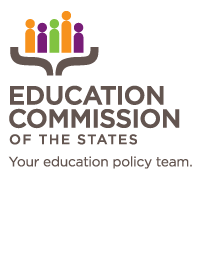Buried deep within student surveys accompanying the 2017 Nation’s Report Card in mathematics is something unexpected: a question about music. You can thank the drafters of those surveys for a supply of information about young people and the arts that has escaped notice until now: state-by-state data on how likely they are to play instruments outside of school.
To make those data more accessible, we have analyzed them and presented the results in interactive maps and charts below. We find disparities by grade level, gender, family income, and race or ethnicity.
The survey question, which appears in the 2017 National Assessment of Educational Progress in Mathematics for both fourth and eighth grades, reads as follows: How often do you participate in each of the following activities outside of school? Play an instrument and read music (student-reported): Never; Once/twice a year; Once/twice a month; Once/twice a week; Every day or almost.
Our analysis focuses on students who play an instrument and read music at least once or twice a week, a category that combines “Once/twice a week” with “Every day or almost.” Here’s what we found:
- Nationally, fourth-graders are more likely than eighth-graders to play instruments outside of school (41 percent vs. 34 percent). Among states, only Hawaii and Utah break this pattern.
- Girls are significantly more likely than boys to do so. This finding holds for every state’s fourth- and eighth-graders. (In the District of Columbia, it holds for fourth-graders but not eighth graders.)
- Students who qualify for free or subsidized lunch are significantly less likely than their wealthier peers to play instruments outside of school. Among fourth-graders, these gaps are statistically significant in 20 states. Among eighth-graders, they are significant in 33 states.
- There are also national disparities by race and ethnicity, but differences are often not statistically significant at the state level.
These results from the math assessment echo findings from the 2016 National Assessment of Educational Progress in the Arts, but unlike that earlier assessment, the 2017 math assessment offers information for each state and the District of Columbia. The disparities we found could arise from several causes, including lopsided gender norms, the cost of musical instruments and private lessons, or uneven access to school music classes.
Whatever the cause, such disparities matter. Research tells us that playing an instrument can boost children’s motor, auditory, verbal and cognitive skills; strengthen their vocabulary; and improve their executive function. Gaps in access to such advantages can widen gaps in academic performance while stifling opportunities for lifelong enrichment through the arts. Policymakers, funders and community leaders can address such gaps by supporting instrumental music in low-income schools and promoting after-school music programs in communities that lack them.
We hope the data below can help you understand and address the gaps in your state.
Scroll down for interactive visualizations displaying the data for fourth and eighth grades. Use the tabs at the top of each visualization to navigate among maps and charts.










